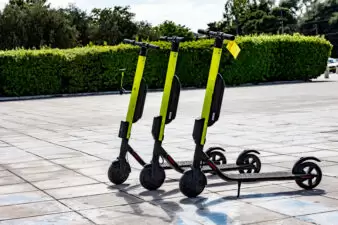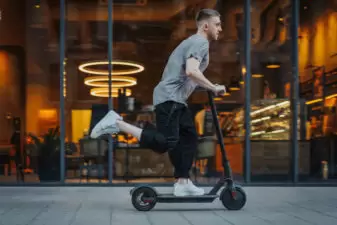
Electric scooters have become a popular mode of transportation in urban areas. People like hopping on to one of these scooters due to their speed and convenience.
While electric scooters are undeniably useful, they also bring their fair share of challenges. Here are 10 unexpected pitfalls that users might encounter when zipping through city streets on electric scooters.
1. Battery Life Limitations

The batteries in electric scooters can run out faster than expected, especially when you’re navigating over hilly terrain or in cold weather. Riders may end up stranded or forced to carry the scooter the rest of the way to their destination.
Unfortunately, this depleting battery causes electric scooters to sometimes be more trouble than they’re worth. When electricity is an issue, a bike or your own two feet may be better forms of transportation.
2. Maintenance Issues

Unlike bicycles, electric scooters have complex electrical systems that can malfunction. You may need to hire someone to perform specialized services to make the repairs.
Oftentimes, finding these specialists takes research and effort. Plus, you run the risk of no one being near you when your scooter takes a dump.
3. Navigating Traffic

Electric scooters offer little protection in traffic. Navigating busy streets alongside larger vehicles can be intimidating and risky. Like any other vehicle, there is also the potential for a collision. Overall, electric scooters are significantly more dangerous to ride on streets than when automobiles.
4. Parking and Theft Concerns

It can be a challenge to find legal, secure parking for electric scooters. To make matters worse, you could get a hefty ticket for improperly parking your scooter. Lightweight scooters, meanwhile, are an easy target for theft. You need to be strategic about where you leave your scooter to avoid these issues.
5. Weather Dependency

Electric scooters are less stable in rain or snow. When you’re cruising around on a slippery surface, you’re significantly increasing your risk for accidents.
Plus, water exposure can damage the scooter’s electrical components. Be sure to check the weather before you commit to commuting on your scooter.
6. Regulatory and Legal Issues

Many cities lack clear regulations for electric scooters. As a result, riders aren’t sure if they should use the sidewalk, bike lane, or road to get from point A to point B. You could get a ticket if you’re not riding in the right area, so it’s important to be knowledgeable. Ask the city ahead of time.
7. Cost Efficiency

Renting electric scooters can be cost-effective for short trips, but frequent use can add up over time. It may be cheaper to ride a bicycle or hop on public transit in some cases. When it comes to longer trips, it’s no question that electric scooters aren’t the best option. Take your car or rent a vehicle instead.
8. Accessibility and Inclusivity

Do you lack balance? You’re not a good candidate for an electric scooter. To operate one safely, you need a certain level of physical ability and balance. People with disabilities or those uncomfortable with high-tech devices are going to be less comfortable riding on one.
9. Impact on Pedestrians

Electric scooters can clutter sidewalks, and create significant obstacles for pedestrians. The rapid speed also poses a collision risk in crowded areas.
Depending on the congestion in the area, it may be better to get off your scooter and walk instead. This could be a safer choice for you and everyone around you.
10. Environmental Trade-offs

Although electric scooters are promoted as being eco-friendly, they still have environmental costs. It takes a lot of energy to charge a scooter. Plus, there are a lot of resources needed to create the scooters and dispose of their batteries. If the planet is your concern, then walking or riding your bicycle are much greener options.
Scoot With Care

There are many benefits to zipping around on electric scooters, but they also have their setbacks. As their popularity grows, it’s important to be aware of these challenges so you can make an informed choice for your commute. No matter how you’re traveling, always follow the rules and keep safety in mind. Scoot with care!
Read More:
12 Red Flags That Indicate Your Car Is a Lemon
Why You Shouldn’t Walk on Escalators

Alyssa Serio has been a writer and editor since graduating from Aurora University in 2014. In her free time, she loves reading, playing volleyball, and watching any horror movie (even the bad ones) with her husband.

